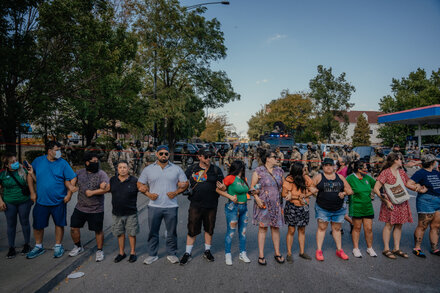New York City Mayor Eric Adams’ political career has been characterized by a dramatic ascent from a Brooklyn police officer to the city’s highest office, followed by a tenure marked by significant challenges and heightened scrutiny. His journey, emblematic of a unique blend of law enforcement background and progressive politics, has seen him navigate a complex urban landscape, grappling with issues ranging from public safety to a burgeoning humanitarian crisis.
From NYPD to City Hall: The Ascent
Adams’ public service began in 1984 as a New York City Transit Police officer, later serving with the New York City Police Department (NYPD) for 22 years. During his time in the NYPD, he co-founded 100 Blacks in Law Enforcement Who Care, an advocacy group aimed at combating racial profiling and police brutality. His experience on the force profoundly shaped his later political platform, particularly his focus on public safety.
His transition to politics began in 2006, when he was elected to the New York State Senate, representing parts of Brooklyn. He served four terms, establishing himself as a voice for his constituents on issues like education and affordable housing. In 2013, Adams successfully ran for Brooklyn Borough President, a position he held for two terms, using the platform to advocate for local businesses and community development.
His mayoral campaign in 2021 resonated with a city grappling with rising crime rates and the economic fallout of the COVID-19 pandemic. Adams, campaigning on a platform of public safety and a “Get Stuff Done” pragmatism, successfully appealed to a broad coalition of voters. “I am the future of the Democratic Party,” Adams declared during his campaign, emphasizing his working-class roots and experience. He secured the Democratic nomination and went on to win the general election, becoming the city’s second Black mayor.
A Tenure Defined by Crises and Scrutiny
Upon taking office in January 2022, Adams immediately prioritized public safety, deploying more officers to subway lines and focusing on reducing gun violence. However, his administration quickly became embroiled in multiple complex issues. Perhaps the most defining challenge has been the escalating migrant crisis, with tens of thousands of asylum seekers arriving in the city, straining resources and leading to significant budget implications.
This issue will destroy New York City.
Adams has frequently called for greater federal assistance, stating the severe strain on city services. Beyond the migrant crisis, Adams’ administration has faced ongoing scrutiny over crime trends, despite some reported declines in specific categories. His leadership has also been tested by a series of high-profile ethics inquiries, including investigations into campaign fundraising practices and alleged ties to foreign governments. While Adams has consistently denied wrongdoing and pledged cooperation, these investigations have cast a shadow over his administration.
The confluence of these challenges has demonstrably impacted public perception and approval ratings for Mayor Adams. While initially enjoying a period of goodwill, polls have shown a consistent decline in his favorability, reflecting public concerns about the city’s direction and the administration’s handling of key issues. Critics have pointed to high staff turnover and a perceived lack of clear policy direction in some areas, while supporters emphasize his dedication to the city and the inherent difficulties of governing a complex metropolis. Adams himself has often adopted a defiant stance.
I’m not here to be liked. I’m here to do what’s right for the city of New York.
Eric Adams’ trajectory from police officer to mayor represents a compelling narrative of ambition, resilience, and the relentless pressures of urban leadership. His rise was fueled by a unique background and a clear message for a city in flux. His subsequent tenure has been a crucible, testing his resolve against an array of unprecedented challenges and leading to a significant re-evaluation of his political standing. The full scope of his “fall,” or rather, the enduring legacy of his administration, continues to unfold.
Source: Read the original article here.





